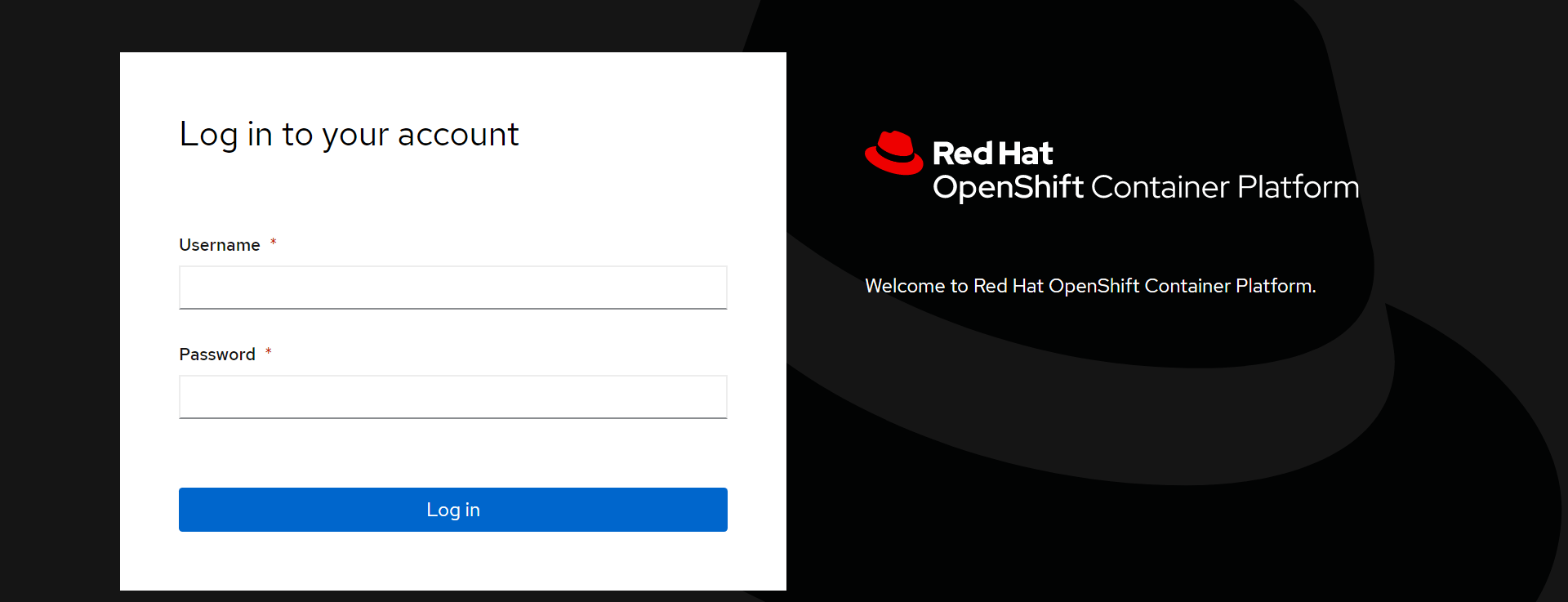# Red Hat OpenShift Container Platform Cluster deployment
This section describes the process to deploy Red Hat OpenShift Container Platform 4.
PREREQUISITES
Bootstrap node should be up.
Master nodes should be up and ready.
# Deploying an OpenShift cluster
This section covers the steps to deploy a Red Hat OpenShift Container Platform 4 cluster with master nodes and worker nodes running RHCOS. After the operating system is installed on the nodes, verify the installation and then perform the following steps:
Login to the installer VM as non-root user.
Execute the following command to bootstrap the nodes.
> BASE_DIR/installer/library/openshift_components/openshift-install wait-for bootstrap-complete --log-level=debugRESULT
DEBUG OpenShift Installer v4.6 DEBUG Built from commit 425e4ff0037487e32571258640b39f56d5ee5572 INFO Waiting up to 30m0s for the Kubernetes API at https://api.ocp.pxelocal.local:6443... INFO API v1.14.6+76aeb0c up INFO Waiting up to 30m0s for bootstrapping to complete... DEBUG Bootstrap status: complete INFO It is now safe to remove the bootstrap resources
NOTE
You can shut down or remove the bootstrap node after the completion of step 1 and step 2.
Run the following command to append the kubeconfig path to environment variables.
> export KUBECONFIG=$BASE_DIR/installer/ignitions/auth/kubeconfigRun the following command to append the oc utility path to environment variables.
> export PATH=$PATH:$BASE_DIR/installer/library/openshift_componentsProvide the PV storage for the registry. Execute the following command to set the image registry storage to an empty directory.
> oc patch configs.imageregistry.operator.openshift.io cluster --type merge --patch '{"spec":{"storage":{"emptyDir":{}}}}'Execute the following command to complete the RedHat OpenShift Container Platform 4 cluster installation.
> $BASE_DIR/installer/library/openshift_components/openshift-install wait-for install-complete --log-level=debugThe result should appear like what appears below.
DEBUG OpenShift Installer v4.6 DEBUG Built from commit 6ed04f65b0f6a1e11f10afe658465ba8195ac459 INFO Waiting up to 30m0s for the cluster at https://api.rrocp.pxelocal.local:6443 to initialize... DEBUG Still waiting for the cluster to initialize: Working towards 4.5: 99% complete DEBUG Still waiting for the cluster to initialize: Working towards 4.5: 99% complete, waiting on authentication, console,image-registry DEBUG Still waiting for the cluster to initialize: Working towards 4.5: 99% complete DEBUG Still waiting for the cluster to initialize: Working towards 4.5: 100% complete, waiting on image-registry DEBUG Still waiting for the cluster to initialize: Cluster operator image-registry is still updating DEBUG Still waiting for the cluster to initialize: Cluster operator image-registry is still updating DEBUG Cluster is initialized INFO Waiting up to 10m0s for the openshift-console route to be created... DEBUG Route found in openshift-console namespace: console DEBUG Route found in openshift-console namespace: downloads DEBUG OpenShift console route is created INFO Install complete! INFO To access the cluster as the system:admin user when using 'oc', run 'export KUBECONFIG=/opt/hpe/solutions/ocp/hpe-solutions-openshift/synergy/scalable/installer/library/ignitions/auth/kubeconfig' INFO Access the OpenShift web-console here: https://console-openshift-console.apps.ocp.pxelocal.local INFO Login to the console with user: kubeadmin, password: a6hKv-okLUA-Q9p3q-UXLc3
NOTE
Make a note of the cluster URL and the username for future access.
If the password is lost or forgotten, view the
file kubeadmin-password located in the installer machine at
*$BASE_DIR/installer/library/ignitions/auth/.*
Figure 38 shows the OpenShift Container Platform console view upon successful deployment.

Figure 38. OpenShift Web Console login screen